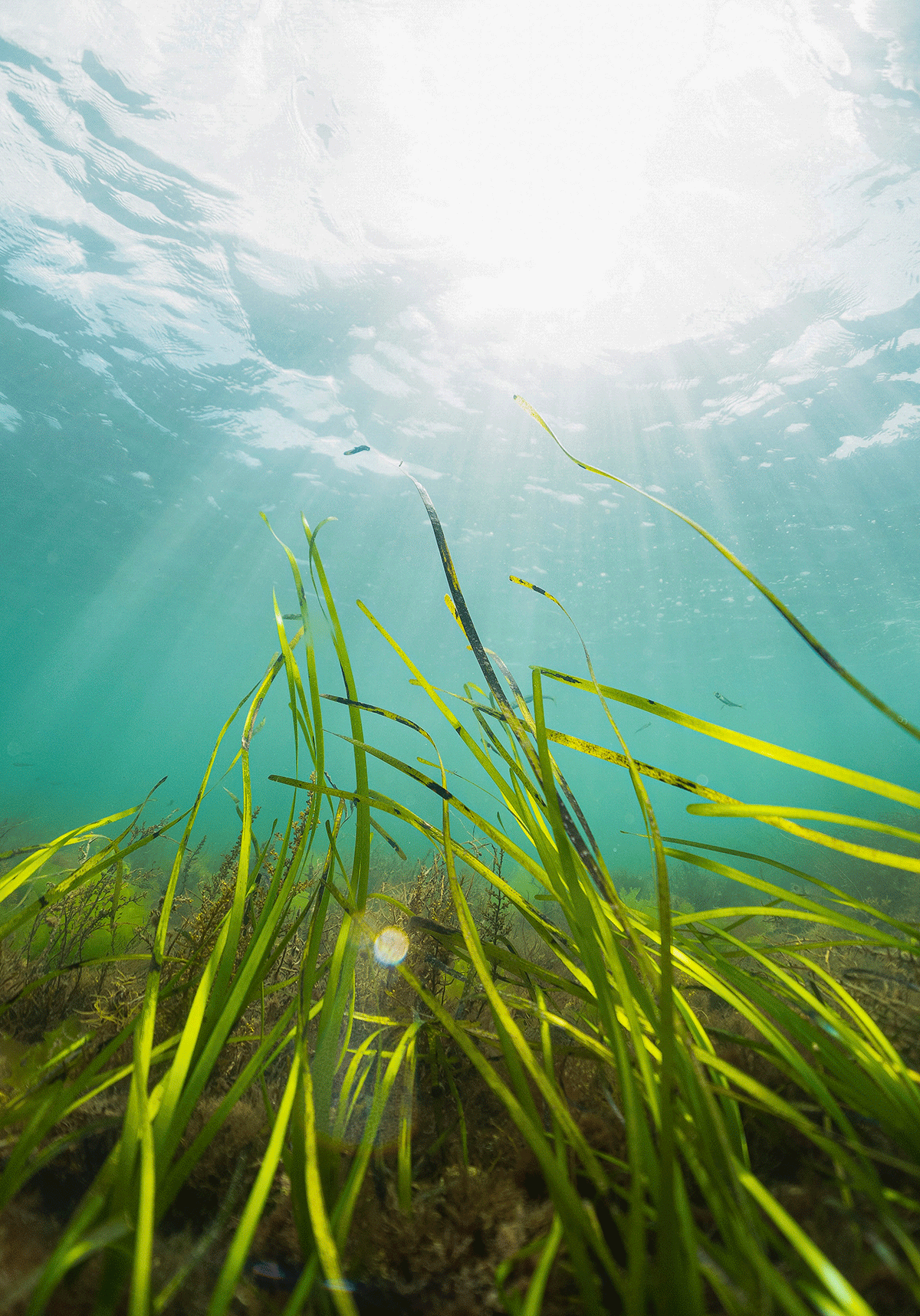A pioneering project by the Marine Conservation Society and the Ocean Conservation Trust has recorded significant seagrass regrowth in Plymouth Sound, whilst continuing to allow safe boat mooring.
Four years following the installation of a new ‘Advanced Mooring System’, the Marine Conservation Society and partners at the Ocean Conservation Trust report a 212 per cent increase in seagrass cover within the mooring area.
Dr Jean Luc-Solandt, Marine Protected Areas Principal Specialist, said, “It is incredibly rewarding to see the seagrass meadows reappear after the installation of the Advanced Mooring Systems, restoring a vital habitat for local biodiversity, carbon storage and coastal protection.
“You cannot get restoration without protection, and by working with the local boating community to protect the seabed, we have collectively given space for this rewilding to take place. Against the backdrop of the climate and nature emergency, the success of this simple system shows how pioneering projects can have a mitigating effect on the impacts of climate change, and reverse local biodiversity decline.”
The initial project installed five Advanced Mooring Systems in Cawsand Bay, Plymouth Sound in 2019, with a further 12 added in 2021 after the COVID pandemic. Traditional moorings consist of an anchor block and a chain attached to a buoy. The chain on these traditional systems can create a ‘halo’ around the block where it drags on the seafloor, damaging existing seagrass, and preventing recovery. The Advanced Mooring System uses buoys, floats or bungee-type devices to keep the chain off the seabed (see diagram in notes to editors).
In England, seagrass beds have declined by up to 90 per cent in the past century, affected by disease, pollution, marine development and infrastructure, and boating activity. An increase in pleasure boating since the 1990s, via recreational fishing, mooring and anchoring, has continued to pressure these vulnerable ecosystems. Cawsand Bay is one of the busiest areas of the Plymouth Sound Special Area of Conservation (SAC), particularly with tourism and small boat use.
The Marine Conservation Society has been recording species in Plymouth seagrass beds, finding that in seagrass areas, there is up to a 70 per cent increase in the number of animals, and 7 per cent increase in the number of different species, compared to surrounding sandy areas. This has been part of the concurrent project, Plymfish, also supported by Princess Yachts, and undertaken in collaboration with the University of Plymouth.
Seagrass beds act as nursery areas for many juvenile fish. Eggs are laid in and around the fronds by small sharks and cuttlefish, and iconic species such as bass and seahorses use them to shelter, breed and feed. They are a vital coastal ecosystem for buffering the destructive power of the sea and its powerful waves, with seagrasses’ root systems locking the sandy seabed together, storing carbon and reducing coastal erosion.
Mark Parry, Head of Ocean Habitat Restoration, at the Ocean Conservation Trust, said: “We are delighted to see the positive effect the installation of the Advanced Mooring Systems has had to increase the presence of seagrass in Plymouth Sound, it is a big win for this sensitive habitat.
“Protecting and restoring seagrass requires a holistic approach and by finding workable solutions like this, it allows communities to continue enjoying the ocean, whilst having a lesser impact on the environment, allowing both people and nature to peacefully coexist.”
This applied conservation effort with the boating community has significant potential to recover seagrass meadows around the UK coast. The Marine Conservation Society will be expanding this work to other sites and asks interested boaters to get in touch with the charity for more details.














